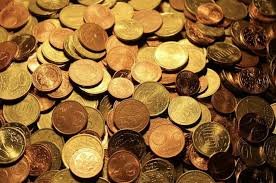Investing in rare coins, also known as numismatics, is a unique way to build wealth through historical and collectible currency. Unlike standard bullion coins, rare coins derive value from their scarcity, historical significance, and collector demand. Below is a detailed exploration of rare coin investments.

1. What Are Rare Coins?
Rare coins are collectible coins that are no longer in circulation and hold value beyond their metal content. They are prized for their historical significance, limited mintage, condition, and demand among collectors.
2. Why Invest in Rare Coins?
A. Tangible Asset
- Unlike stocks or digital investments, rare coins are physical assets that cannot be erased or hacked.
B. Historical Significance
- Many rare coins have a story, making them valuable artifacts of the past.
C. Scarcity and Demand
- The fewer coins available in the market, the higher their potential value.
D. Hedge Against Inflation
- Rare coins often retain or increase in value during economic downturns.
E. Tax Advantages
- In some regions, rare coins are exempt from capital gains tax.
3. Types of Rare Coins
A. Ancient Coins
- Coins from Greek, Roman, Byzantine, or medieval times.
- Example: Athenian Owl Tetradrachm (5th century BC).
B. Pre-1933 U.S. Gold Coins
- The U.S. government confiscated gold coins in 1933, making pre-1933 issues highly collectible.
- Example: Saint-Gaudens Double Eagle ($20 gold coin).
C. Key Date Coins
- Coins with low mintage or limited availability.
- Example: 1909-S V.D.B. Lincoln Cent (only 484,000 minted).
D. Commemorative Coins
- Issued to mark special events, often produced in limited numbers.
- Example: 1893 Columbian Exposition Half Dollar.
E. Error Coins
- Minting mistakes create unique coins that collectors value.
- Example: 1955 Doubled Die Lincoln Cent.
F. Silver Dollars
- Older U.S. silver dollars are highly sought after.
- Example: 1879-CC Morgan Silver Dollar (Carson City mint).
4. Factors That Determine a Rare Coin’s Value
A. Rarity
- The fewer coins that exist, the higher the value.
B. Condition (Grading)
- Coins are graded on a scale of 1 to 70 (Sheldon Scale).
- Professional grading services include PCGS (Professional Coin Grading Service) and NGC (Numismatic Guaranty Corporation).
C. Historical Significance
- Coins from significant historical events or rulers tend to be more valuable.
D. Market Demand
- Collector interest drives prices up, especially for famous series like Morgan Dollars.
E. Metal Content
- Coins with gold or silver content have intrinsic value, but numismatic value often surpasses metal value.
5. How to Invest in Rare Coins
A. Buy from Reputable Dealers
- Purchase from certified coin dealers or auction houses.
- Avoid online scams and uncertified sellers.
B. Research Before Buying
- Study price guides like The Red Book (A Guide Book of United States Coins).
- Follow auction results from Heritage Auctions, Stack’s Bowers, or Sotheby’s.
C. Coin Grading & Authentication
- Always buy coins graded by PCGS or NGC to ensure authenticity and condition.
D. Store Coins Properly
- Use coin holders, capsules, and climate-controlled storage.
- Avoid touching coins directly to prevent wear.
E. Diversify Your Collection
- Invest in different types of rare coins to balance risk.
6. Risks of Investing in Rare Coins
A. Market Fluctuations
- Demand for collectible coins varies over time.
B. Counterfeits
- Fake coins exist, making authentication crucial.
C. Liquidity Issues
- Unlike stocks, selling rare coins quickly at market value can be challenging.
D. Storage & Insurance Costs
- Proper safekeeping and insurance add extra expenses.